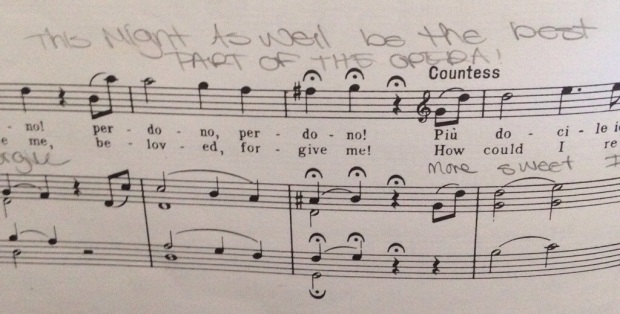Bending Mozart
“Bend It Like Beckham” was a very popular soccer movie that started a new catch-phrase for anyone who wanted to be at the top of his or her game. In soccer, the term “bend it” means to kick the ball in one direction, and while the ball is in the air, its spin makes it curve in another direction to fly into the goal. David Beckham, a huge soccer star, seems to do this move naturally and easily. When asked how he does it so precisely, he simply says 20-30 kicks as daily practice. As singers we also do this with our daily runs and vocalizes to keep our body and minds agile for those big moments on stage. Similarly we bend the air with our voices as instruments to make magic out of the black and white notes on the page, turning them into excitement for the audience.
I am thinking of this now because I am currently singing in Rome, while the World Cup games are being played, and was here when Italy won their opener game for the FIFA World Cup Series Title. While soccer is not my expertise, how the athletes come together to compete in these highly emotional and widely publicized games is very similar to what we do on the stage. In the past two weeks, we have been preparing to perform a well known opera written by Mozart, Le Nozze di Figaro, and our “players” come from all different backgrounds: Italy, France, Germany, Czech Republic, and the United States. Each singer prepares their role on their own privately, but the real challenge comes from the togetherness of being a complete team and cast full of very diverse and exceptional singers.
All top performers in sports and in music have these common attributes: a consistent positive attitude, a demand for the best from their team, and the ability to create their own unique style off of the basic techniques. To have style means they can “bend” the technical aspects of their craft. For a singer, it would be the way they are able to “wow” an audience with one emotion. It is not just the notes that must be delivered precisely, it is the collaboration and interaction with our fellow singers and ensembles that really makes the opera come alive onstage. Mozart knew this quite well by putting the vocal bulk of the action and comedy that happens in the story line when the singers are all onstage for the ensemble parts to really heighten the emotions. He wrote some of the most glorious music at the end of Act 4 in Nozze, when the Count tells the Countess of his apologies and the rest of the chorus joins in with the same melody. The result is a beautiful moment that captures the essence of sincerity in love that was finally found within each character as well as noticed in each other at the end of the opera.
So when the time comes for us to be Divas on our own, with the utmost confidence and precision in our arias, we have to remember that our talent is only 50% of the whole. Which means that the more Divas we have on the stage and off, the better. The better for our art, the better for our operas, and the better for creating new ways to tell a story. Or in my opinion all the better for us to “bend it” in a way that will naturally attract others to watch more of what we do, as singers, performers, and poshies.
~ J


You must be logged in to post a comment.